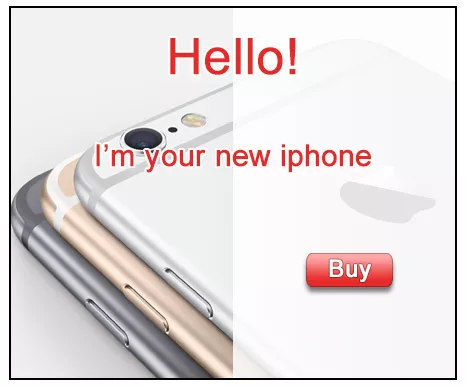Premium Segment Online Electronics Store Success Story: ROMI of 251%
Niche: Premium segment online electronics store.
Results: 42% of orders made by phone and ROMI increased by 251%.
The Client
In this project, here is what we worked with:
- A premium segment online electronics store.
- Advertising campaigns in display networking for branding.
The Challenge
On March 12th, 2014, the contextual media network campaigns were launched. Between then and February 28th, 2015, we received 17 transactions for 1899.41 USD, with traffic of 111490 sessions and expenses of 4994.29 USD.
As you can see, the transactions coefficient was vanishingly small. Considering the fact that these stats covered a period of less than one year, the income was also insignificant. To be precise, it averaged at about 170 USD per month.
On the other hand, “%product name% in %store name%” type constructions started to appear in the requests, as well as some branded organic traffic with good transactions coefficient. The branding produced results.
In September, we received 69 iPhone 6 pre-orders (conversion from the current preorders is unknown). The cost of preorder was $7.
The Solution
We launched the iPhone 6 CMN campaign with two ad groups; the first one with interests targeting, and the second one with keywords. One month passed. We received 1315 clicks, spent 24 USD, and got 0 sales.
Conclusion #1. Using a single targeting type doesn’t work. Don’t do that.
Attempt #2: Locating on the platforms
We analyzed traffic, collected the qualitative platforms (selected by low bounce rate) and launched one more platform targeted group. In addition, we manually collected target (in our subjective opinion) platforms. The groups with interest and keyword targeting remained enabled, lowering rates for collecting additional platforms. We also eliminated about 3,000 rubbish websites with online games for girls. In the end, we received remarkably little low-quality traffic.
Conclusion #2. The approach to display network optimization by eliminating low-quality platforms and expecting quality traffic is incorrect. There are a plenty of low-quality CMN platforms.
Conclusion #2.1. Topical platforms and target audiences are not the same thing.
Attempt #3: Learning to combine
We analysed the traffic again. This time, we launched the ad group with a combination of good keywords and good interests (from our point of view). We stopped all other ad campaign groups. The results (bounce rate and other behavioral factors) showed an improvement, though not a significant one.
Conclusion #3. I previously thought that the keywords in contextual media networking function in a very broad match. “iPhone” and “Buy iPhone” keywords work the same way because in both cases, the “iPhone” keyword will appear on the page. Unfortunately, it appeared to be nothing like that. It was necessary to seek for some type of balance between increased coverage and more target keywords.
Attempt #4: Studying Google Analytics
After performing the current actions, we again analysed our campaign trying to understand what had gone wrong. We looked through the “Category interests” report, and saw audiences with good transaction coefficients. We used them to replace the ones that were previously selected in accordance with our tastes. The traffic quality improved again, but there were still no sales and the money continued to go wasted.
Conclusion #4. I had previously thought that all audiences in Google Analytics/AdWords completely cover all audiences of CMN. That turned out to be untrue. To be sure, I checked it with the other project; after adding the whole audience to the remarketing campaign, the amount of impressions decreased drastically.
Attempt #5: Learning how to write CTA
The traffic quality was already quite good (as we thought) after the previous attempt, and this time we blamed it on the quality of the advertisements themselves. Therefore, we implemented a small change. The ads started to look like this:
As a result, CTR improved and traffic quality got extremely close to the quality of traffic from the search. However, there were still no sales.
Conclusion #5. I previously thought that if users clicked on the banner, they are therefore interested (if it’s not an accidental click). That’s not true as the banner quality seriously impacts the traffic quality.
Attempt #6: Delusions are forever
Once again, we started an analysing campaign. We found the report on the segments of the audience that were present on the market (interested customer audiences (ROI) in AdWords). Accordingly, we made a segment for users that had bought an iPhone: 
Audiences with 3% conversion while the average site conversion was 1%?! Here, it became clear that victory was in sight. We changed the audiences from the “good” ones in the first report, to “good” ones in the last report. Together with the improved conversion, the traffic quality was already better than the one from search. I then waited for the sales from CMN, nervously rubbing my hands.

Conclusion #6. The entire list of audiences is not equal to the whole display network audience. Therefore, the segments of the audiences are also not equal in its coverage to the segments present on the market. People can be interested in the electronic novelties, but don’t plan to buy them.
Conclusion #6.1. In the last report, I noticed, in particular, the audience interested in BMW cars. This audience was a source of high-quality traffic. If the audiences were sorted out based on proposals and logics, that feature would have never been revealed.
The Results
After making a couple of small adjustments (increased rates for several keywords, cut off several audiences), and three months of continued effort, the sales finally commenced! The graph shows the results:
However, such calculations are not quite correct due to the small number of transactions. The ROI of 191% was only from the e-commerce income. As you can see, delusions can ruin your business, and the analysis presented above on contextual advertising perfectly demonstrates how it all goes.
Display networking optimization is a complex process that requires high-quality content as well as clearly defined and properly segmented target audience. We thoroughly analyzed the campaign itself, used Google Analytics to identify the weak spots, and tried different types of banners, among other strategies.
Related Articles
Firebase Dynamic Links Is Shutting Down — Here’s How to Preserve Functionality and Retain Users
How to prepare for the shutdown of Firebase Dynamic Links and preserve deep linking, analytics, and UTM tags using App Links, Universal Links, or third-party services
How to Set Up Consent Mode in GA4 on Your Website with Google Tag Manager
Let's explore how to properly integrate consent mode in GA4, configure it for effective data collection, and at the same time comply with GDPR and other legal regulations
Display Advertising Effectiveness Analysis: A Comprehensive Approach to Measuring Its Impact
In this article, I will explain why you shouldn’t underestimate display advertising and how to analyze its impact using Google Analytics 4







